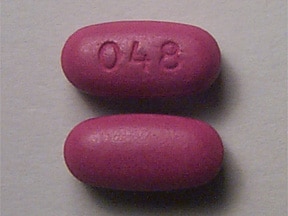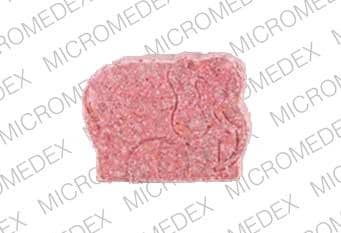Dosage Forms
Excipient information presented when available (limited, particularly for generics); consult specific product labeling. [DSC] = Discontinued product
Capsule, Oral:
IFerex 150 Forte: Elemental iron 150 mg, cyanocobalamin 25 mcg, and folic acid 1 mg [contains brilliant blue fcf (fd&c blue #1), fd&c yellow #10 (quinoline yellow)]
Myferon 150 Forte: Elemental iron 150 mg, cyanocobalamin 25 mcg, and folic acid 1 mg [contains fd&c blue #1 aluminum lake, fd&c red #40 aluminum lake]
Poly-Iron 150 Forte: Elemental iron 150 mg, cyanocobalamin 25 mcg, and folic acid 1 mg [contains fd&c blue #1 aluminum lake, fd&c red #40 aluminum lake]
Tablet, Oral:
BiferaRx: Iron as polysaccharide iron complex 22 mg, iron as heme iron polypeptide 6 mg, cyanocobalamin 25 mcg, and folic acid 1 mg [DSC] [scored; contains fd&c blue #2 aluminum lake, fd&c red #40 aluminum lake]
Irofol: Elemental iron 150 mg, cyanocobalamin 25 mcg, and folic acid 1 mg
Use: Labeled Indications
Iron deficiency anemia, prevention/treatment: Prevention and treatment of iron-deficiency anemias and/or nutritional megaloblastic anemias
Contraindications
Hypersensitivity to any components of the formulation; hemochromatosis; hemosiderosis
Dosage and Administration
Dosing: Adult
Note: Immediate release oral iron products are preferred for treatment of iron deficiency anemia; enteric coated and slow/sustained release preparations are not desired due to poor absorption (Hershko 2014; Liu 2012).
Iron deficiency anemia, prevention/treatment: Oral: One capsule or tablet once daily. Note: Alternate-day dosing (eg, every other day or Monday, Wednesday, Friday) has been shown to result in greater absorption of iron; some experts recommend this dosing schedule in patients who can maintain adherence (Schrier 2019; Stoffel 2017).
Dosing: Geriatric
Refer to adult dosing.
Dietary Considerations
Dietary sources of iron include beans, cereal (enriched), clams, beef, lentils, liver, oysters, shrimp, and turkey. Foods that enhance dietary absorption of iron include broccoli, grapefruit, orange juice, peppers and strawberries. Foods that decrease dietary absorption of iron include coffee, dairy products, soy products, spinach, and tea.
Storage
Store at 25°C (77°F); excursions permitted to 15°C to 30°C (59°F to 86°F).
Poly-Iron 150 Forte: Store at 15°C to 30°C (59°F to 86°F).
Polysaccharide-Iron Complex, Vitamin B12, and Folic Acid Images
Drug Interactions
Alpha-Lipoic Acid: Iron Preparations may decrease the absorption of Alpha-Lipoic Acid. Alpha-Lipoic Acid may decrease the absorption of Iron Preparations. Consider therapy modification
Antacids: May decrease the absorption of Iron Preparations. Management: Separate dosing of oral iron preparations and antacids as much as possible to avoid decreased efficacy of iron preparation. If coadministered with antacids, monitor for decreased therapeutic effects of iron preparations. Consider therapy modification
Baloxavir Marboxil: Polyvalent Cation Containing Products may decrease the serum concentration of Baloxavir Marboxil. Avoid combination
Bictegravir: Iron Preparations may decrease the serum concentration of Bictegravir. Management: Bictegravir, emtricitabine, and tenofovir alafenamide can be administered with iron preparations under fed conditions, but coadministration with or 2 hours after an iron preparation is not recommended under fasting conditions. Consider therapy modification
Bisphosphonate Derivatives: Polyvalent Cation Containing Products may decrease the serum concentration of Bisphosphonate Derivatives. Management: Avoid administration of oral medications containing polyvalent cations within: 2 hours before or after tiludronate/clodronate/etidronate; 60 minutes after oral ibandronate; or 30 minutes after alendronate/risedronate. Exceptions: Pamidronate; Zoledronic Acid. Consider therapy modification
Cefdinir: Iron Preparations may decrease the serum concentration of Cefdinir. Red-appearing, non-bloody stools may also develop due to the formation of an insoluble iron-cefdinir complex. Management: Avoid concurrent cefdinir and oral iron when possible. Separating doses by several hours may minimize interaction. Iron-containing infant formulas do not appear to interact with cefdinir. Consider therapy modification
Deferiprone: Polyvalent Cation Containing Products may decrease the serum concentration of Deferiprone. Management: Separate administration of deferiprone and oral medications or supplements that contain polyvalent cations by at least 4 hours. Consider therapy modification
Dimercaprol: May enhance the nephrotoxic effect of Iron Preparations. Avoid combination
Dolutegravir: Iron Preparations may decrease the serum concentration of Dolutegravir. Management: Administer dolutegravir at least 2 hours before or 6 hours after oral iron. Administer dolutegravir/rilpivirine at least 4 hours before or 6 hours after oral iron. Alternatively, dolutegravir and oral iron can be taken together with food. Consider therapy modification
Eltrombopag: Polyvalent Cation Containing Products may decrease the serum concentration of Eltrombopag. Management: Administer eltrombopag at least 2 hours before or 4 hours after oral administration of any polyvalent cation containing product. Consider therapy modification
Entacapone: Iron Preparations may decrease the serum concentration of Entacapone. Management: Consider separating doses of the agents by 2 or more hours to minimize the effects of this interaction. Monitor for decreased therapeutic effects of levodopa during concomitant therapy, particularly if doses cannot be separated. Consider therapy modification
Ferric Hydroxide Polymaltose Complex: May decrease the serum concentration of Iron Preparations. Specifically, the absorption of oral iron salts may be reduced. Management: Do not administer intravenous (IV) ferric hydroxide polymaltose complex with other oral iron preparations. Therapy with oral iron preparations should begin 1 week after the last dose of IV ferric hydroxide polymaltose complex. Consider therapy modification
Fluorouracil Products: Folic Acid may enhance the adverse/toxic effect of Fluorouracil Products. Monitor therapy
Fosphenytoin: Folic Acid may decrease the serum concentration of Fosphenytoin. Monitor therapy
Green Tea: May decrease the serum concentration of Folic Acid. Monitor therapy
Histamine H2 Receptor Antagonists: May decrease the absorption of Iron Preparations. Monitor therapy
Levodopa: Iron Preparations may decrease the serum concentration of Levodopa. Only applies to oral iron preparations. Management: Consider separating doses of the agents by 2 or more hours to minimize the effects of this interaction. Monitor for decreased therapeutic effects of levodopa during concomitant therapy, particularly if doses cannot be separated. Consider therapy modification
Levothyroxine: Iron Preparations may decrease the serum concentration of Levothyroxine. Management: Separate oral administration of iron preparations and levothyroxine by at least 4 hours. Separation of doses is not required with parenterally administered iron preparations or levothyroxine. Consider therapy modification
Methyldopa: Iron Preparations may decrease the serum concentration of Methyldopa. Consider therapy modification
PenicillAMINE: Polyvalent Cation Containing Products may decrease the serum concentration of PenicillAMINE. Management: Separate the administration of penicillamine and oral polyvalent cation containing products by at least 1 hour. Consider therapy modification
PHENobarbital: Folic Acid may decrease the serum concentration of PHENobarbital. Monitor therapy
Phenytoin: Folic Acid may decrease the serum concentration of Phenytoin. Monitor therapy
Phosphate Supplements: Iron Preparations may decrease the absorption of Phosphate Supplements. Management: Administer oral phosphate supplements as far apart from the administration of an oral iron preparation as possible to minimize the significance of this interaction. Exceptions: Sodium Glycerophosphate Pentahydrate. Consider therapy modification
Primidone: Folic Acid may decrease the serum concentration of Primidone. Additionally, folic acid may decrease concentrations of active metabolites of primidone (e.g., phenobarbital). Monitor therapy
Proton Pump Inhibitors: May decrease the absorption of Iron Preparations. Monitor therapy
Pyrimethamine: Folic Acid may diminish the therapeutic effect of Pyrimethamine. Management: Folic acid doses greater than 2.5 mg per day should be avoided due to the potential for sulfadoxine/pyrimethamine treatment failure. Consider limiting folic acid use to no more than 0.4 mg per day for women of child-bearing age. Consider therapy modification
Quinolones: Iron Preparations may decrease the serum concentration of Quinolones. Management: Give oral quinolones at least several hours before (4 h for moxi- and sparfloxacin, 2 h for others) or after (8 h for moxi-, 6 h for cipro/dela-, 4 h for lome-, 3 h for gemi-, and 2 h for levo-, nor-, oflox-, pefloxacin, or nalidixic acid) oral iron. Exceptions: LevoFLOXacin (Oral Inhalation). Consider therapy modification
Raltegravir: Polyvalent Cation Containing Products may decrease the serum concentration of Raltegravir. Management: Administer raltegravir 2 hours before or 6 hours after administration of the polyvalent cations. Dose separation may not adequately minimize the significance of this interaction. Consider therapy modification
Raltitrexed: Folic Acid may diminish the therapeutic effect of Raltitrexed. Avoid combination
Sulfadoxine: Folic Acid may diminish the therapeutic effect of Sulfadoxine. Management: Folic acid doses greater than 2.5 mg per day should be avoided due to the potential for sulfadoxine/pyrimethamine treatment failure. Consider limiting folic acid use to no more than 0.4 mg per day for women of child-bearing age. Consider therapy modification
SulfaSALAzine: May decrease the serum concentration of Folic Acid. Monitor therapy
Tetracyclines: May decrease the absorption of Iron Preparations. Iron Preparations may decrease the serum concentration of Tetracyclines. Management: Avoid this combination if possible. Administer oral iron preparations at least 2 hours before, or 4 hours after, the dose of the oral tetracycline derivative. Monitor for decreased therapeutic effect of oral tetracycline derivatives. Exceptions: Eravacycline. Consider therapy modification
Trientine: Polyvalent Cation Containing Products may decrease the serum concentration of Trientine. Management: Avoid concomitant administration of trientine and oral products that contain polyvalent cations. If oral iron supplements are required, separate the administration by 2 hours. If other oral polyvalent cations are needed, separate administration by 1 hour. Consider therapy modification
Adverse Reactions
Frequency not defined.
Gastrointestinal: Abdominal pain, constipation, dark stools, diarrhea, epigastric pain, GI irritation, nausea, stomach cramping, vomiting
Genitourinary: Discolored urine
Miscellaneous: Hypersensitivity reaction
Warnings/Precautions
Disease-related concerns:
- Anemia: Not appropriate for with pernicious, aplastic, or normocytic anemias when anemia is present with vitamin B12 deficiency.
- Pernicious anemia: Folate doses >0.1 mg/day may obscure pernicious anemia in that hematologic remission can occur with continuing irreversible nerve damage progression.
Concurrent drug therapy issues:
- Drug-drug interactions: Potentially significant interactions may exist, requiring dose or frequency adjustment, additional monitoring, and/or selection of alternative therapy. Consult drug interactions database for more detailed information.
Special populations:
- Pediatric: Accidental overdose of iron-containing products is a leading cause of fatal poisoning in children under 6 years of age. Keep this product out of the reach of children. In case of accidental overdose call the poison control center immediately.
Dosage form specific issues:
- Oral iron formulations: Immediate release oral iron products are preferred for treatment of iron deficiency anemia; enteric coated and slow/sustained release preparations are not desired due to poor absorption (Hershko 2014; Liu 2012).
Pregnancy
Pregnancy Considerations
Refer to individual monographs
Patient Education
What is this drug used for?
- It is used to prevent or treat anemia.
Frequently reported side effects of this drug
- Abdominal pain
- Constipation
- Diarrhea
- Stool discoloration
- Nausea
- Vomiting
Other side effects of this drug: Talk with your doctor right away if you have any of these signs of:
- Black, tarry, or bloody stools
- Vomiting blood
- Abdominal cramps
- Signs of a significant reaction like wheezing; chest tightness; fever; itching; bad cough; blue skin color; seizures; or swelling of face, lips, tongue, or throat.
Note: This is not a comprehensive list of all side effects. Talk to your doctor if you have questions.
Consumer Information Use and Disclaimer: This information should not be used to decide whether or not to take this medicine or any other medicine. Only the healthcare provider has the knowledge and training to decide which medicines are right for a specific patient. This information does not endorse any medicine as safe, effective, or approved for treating any patient or health condition. This is only a brief summary of general information about this medicine. It does NOT include all information about the possible uses, directions, warnings, precautions, interactions, adverse effects, or risks that may apply to this medicine. This information is not specific medical advice and does not replace information you receive from the healthcare provider. You must talk with the healthcare provider for complete information about the risks and benefits of using this medicine.





